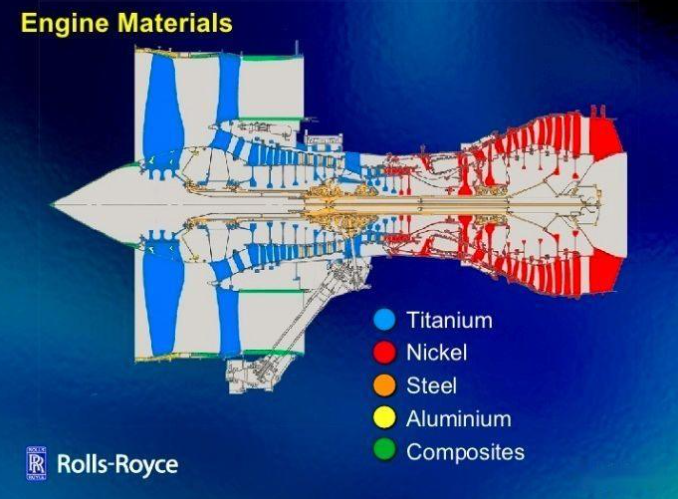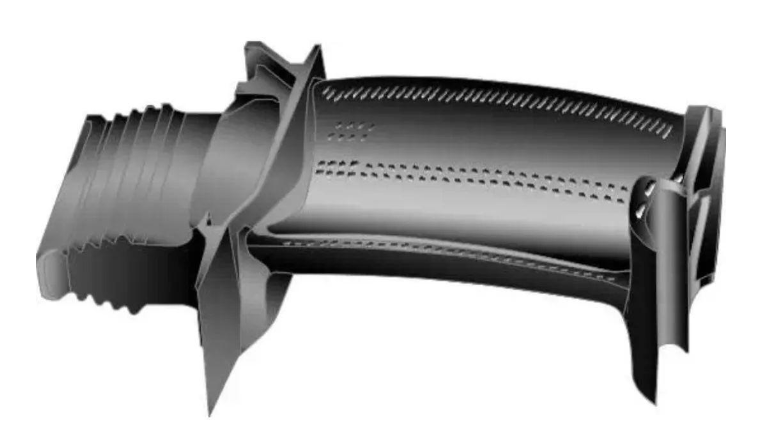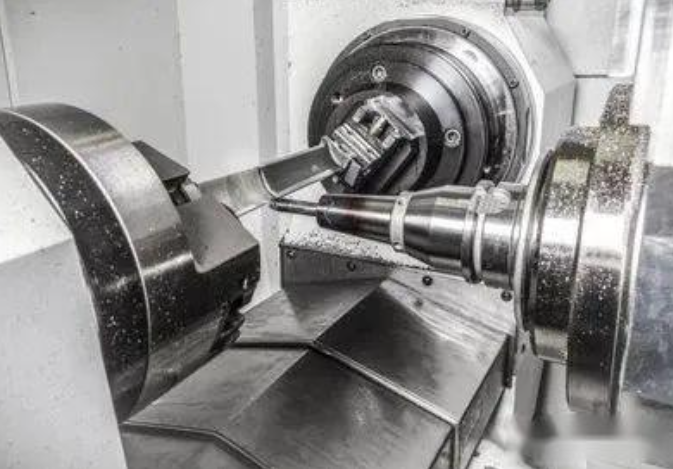Turbine Blade Introduction
The component with the worst working conditions in the turbine engine is also the most important rotating component. In the hot end components of aircraft engines, the turbine blades are subjected to high-temperature gas erosion and temperature changes during the engine start-up and shutdown cycles, and the rotor blades are subjected to centrifugal force at high speeds. The material is required to have sufficient high-temperature tensile strength, endurance strength, creep strength, as well as good fatigue strength, oxidation resistance, gas corrosion resistance and appropriate plasticity. In addition, long-term organizational stability, good impact strength, castability and low density are also required.

The gas inlet temperature of advanced aircraft engines reaches 1380℃ and the thrust reaches 226KN. The turbine blades are subjected to aerodynamic and centrifugal forces, and the blade part is subjected to tensile stress of about 140MPa; the blade root part is subjected to an average stress of 280~560MPa, and the corresponding blade body is subjected to a temperature of 650~980℃, and the blade root part is about 760℃.
The performance level of turbine blades (especially the temperature bearing capacity) has become an important indicator of the advanced level of a model engine. In a sense, the casting process of future engine blades directly determines the performance of the engine and is also a significant indicator of the level of a country’s aviation industry.
The shape of the blade
Since there are many blades, if they are designed into straight regular shapes, a lot of processing technology can be reduced, the design difficulty can be lowered, and a lot of costs can be reduced. However, most of the blades are twisted and curved.


Development History
As the power of aircraft engines continues to increase, it is achieved by increasing the compressor inlet temperature, which requires the use of advanced blades with higher and higher temperature resistance. In addition to high temperature conditions, the working environment of hot end blades is also in an extreme state of high pressure, high load, high vibration, and high corrosion, so the blades are required to have extremely high comprehensive performance. This requires the blades to be made of special alloy materials (high temperature alloys) and special manufacturing processes (precision casting plus directional solidification) to make special matrix structures (single crystal structures) to meet the needs to the greatest extent possible.
Complex single-crystal hollow turbine blades have become the core technology of current high thrust-to-weight ratio engines. It is the research and use of advanced single-crystal alloy materials and the emergence of double-walled ultra-air-cooled single-crystal blade manufacturing technology that have enabled single-crystal preparation technology to play a key role in today’s most advanced military and commercial aviation engines. At present, single-crystal blades have not only been installed on all advanced aviation engines, but are also increasingly used in heavy-duty gas turbines.


Single crystal superalloys are a type of advanced engine blade materials developed on the basis of equiaxed crystals and directional columnar crystals. Since the early 1980s, the first generation of single crystal superalloys such as PWA1480 and ReneN4 have been widely used in a variety of aircraft engines. In the late 1980s, the second generation of single crystal superalloy blades represented by PWA1484 and ReneN5 were also widely used in advanced aircraft engines such as CFM56, F100, F110, and PW4000. At present, the second generation of single crystal superalloys in the United States have matured and are widely used in military and civilian aircraft engines.
Blade base material and manufacturing technology
Deformed high temperature alloy blades
The table shows the grades of high-temperature alloys used for aircraft blades and their operating temperatures
Blades are key parts of aircraft engines, and their manufacturing volume accounts for about 30% of the total manufacturing volume of the entire engine.
Aircraft engine blades are thin-walled and easily deformed parts. How to control their deformation and process them efficiently and with high quality is one of the important research topics in the blade manufacturing industry.


Contact us
Thank you for your interest in our company! As a professional gas turbine parts manufacturing company, we will continue to be committed to technological innovation and service improvement, to provide more high-quality solutions for customers around the world.If you have any questions, suggestions or cooperation intentions, we are more than happy to help you. Please contact us in the following ways:
WhatsAPP:+86 135 4409 5201
E-mail:peter@turbineblade.net
